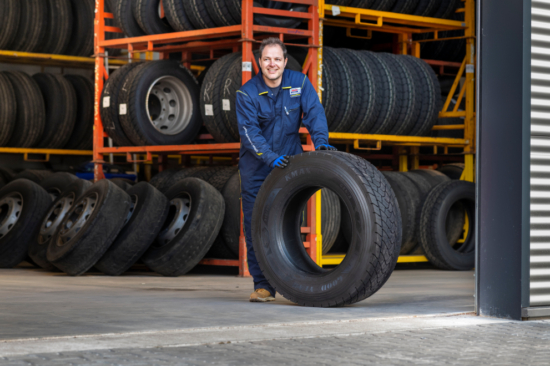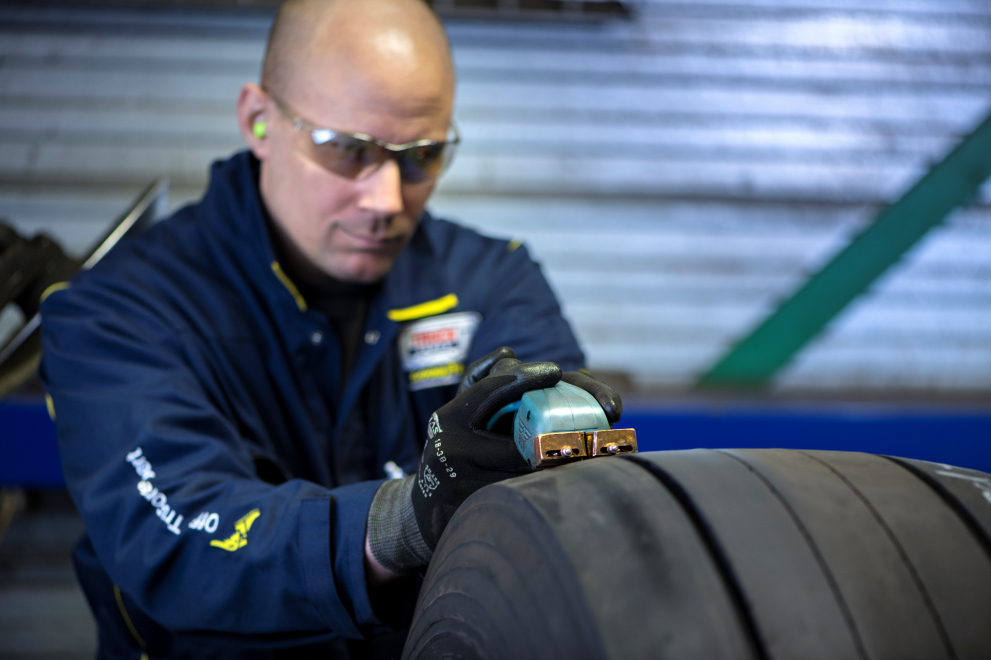Goodyear invites transportation industry to rethink retreading
 Goodyear’s retreading offer can be customised to meet specific needs (Photo: Goodyear)
Goodyear’s retreading offer can be customised to meet specific needs (Photo: Goodyear)
In the current environment, rethinking retreading is something Goodyear considers “even more relevant than before.” Not only is Europe’s Fit-for-55 package of proposed climate legislation urging the region to become increasingly greener, but the transportation industry also faces the impact of increasing costs.
Many fleets have already turned to retreading as a means of reducing costs and carbon footprint. Goodyear’s Sustainable Reality Survey indicates that three out of four fleets recognise carbon footprint reduction as an important issue and 42 per cent fit their vehicles with retreaded tyres. Marc Preedy, Goodyear’s managing director replacement for commercial Europe, comments that the survey “showed that our customers want to be part of the circular economy, supporting sustainability, yet also driving value for their end-customers.”
Noting that retreading uptake is still under 50 per cent and that the European Commission’s Green Deal aims to make the continent carbon-neutral by 2050, Preedy sees a “clear opportunity” to make further sustainability gains. “Our latest innovative generation tyres and fleet management solutions equip fleets to lower emissions without adding complexity in the daily operations. The Goodyear Retreading programme will help drive further progress in overall fleet sustainability.”
Customisable multiple lives approach
In-house Goodyear analysis claims that leading transport companies using Goodyear Retreading solutions can cut overall tyre bills by ten per cent and extend tyre life by an additional 150 per cent. As for resources saved, Goodyear says its retreading process results in 56 per cent less crude oil used for manufacturing.
Goodyear recommends a multiple lives approach of regrooving tyres, retreading them and then regrooving a second time. The company adds that its offer can be customised to meet specific needs. Fleets can select to exclusively retread their own casings, or they can opt to join a casing exchange programme. Fleets can choose from TreadMax tyres, which use the latest generation of casing technology as well as fuel-efficient and low emission tread innovations, or NextTread which offers standardised tyre patterns and a wider range.

A multiple lives approach involves regrooving, retreading and regrooving a second time (Photo: Goodyear)
“For decades, fleet operators have trusted Goodyear TreadMax and NextTread retreads to reduce the total cost of operation. Now, combined with our end-to-end Goodyear Total Mobility fleet management offer, the Goodyear Retreading solution goes a step further in helping operators support their sustainability objectives. The high residual value of the premium Goodyear casing makes this process sustainable from both a financial and environmental perspective.” adds Preedy.
The tyre maker points out that greater sustainability can be achieved within the Goodyear Total Mobility value proposition when combining retreading with low emission tyres like Fuelmax Endurance and smart tyre monitoring solutions as well as FleetOnlineSolutions to create a sustainable and efficient tyre management package for fleet operators.
Optimising end-to-end
In recent months, Goodyear has intensified its collaboration with local casing handling partners. This includes investment in state-of-the art shearography inspection equipment. Shearography delivers an even more accurate, non-destructive inspection that results in less scrapping and waste, contributing to successful data-based circular economy practices. Furthermore, instead of shipping casings to a central inspection site, partners inspect casings locally. They only send approved casings to Goodyear’s retreading facilities, cutting out the redundant shipping of non-conforming casings across Europe.
Alongside working with certified local casing partners, Goodyear is optimising the end-to-end logistics of casing handling. Casing data is entered and monitored automatically using the eCasing app, eliminating double handling and the need for manual data entry. Goodyear describes the casing app, which supports all retreading business models and offers full mobile tracking of Customer Owned Casings and Casing Exchange flows, as “very intuitive.”


 Bridgestone
Bridgestone

Comments